14Mar
Lesson Plan > Lesson 24 > English
Elementary Level: Sight Words (Set 2: can, we, go, am, at)
Mid Level: Synonyms and Antonyms
High Level: Punctuation and Sentence Fluency
Elementary Level (Kinder to Grade 2)
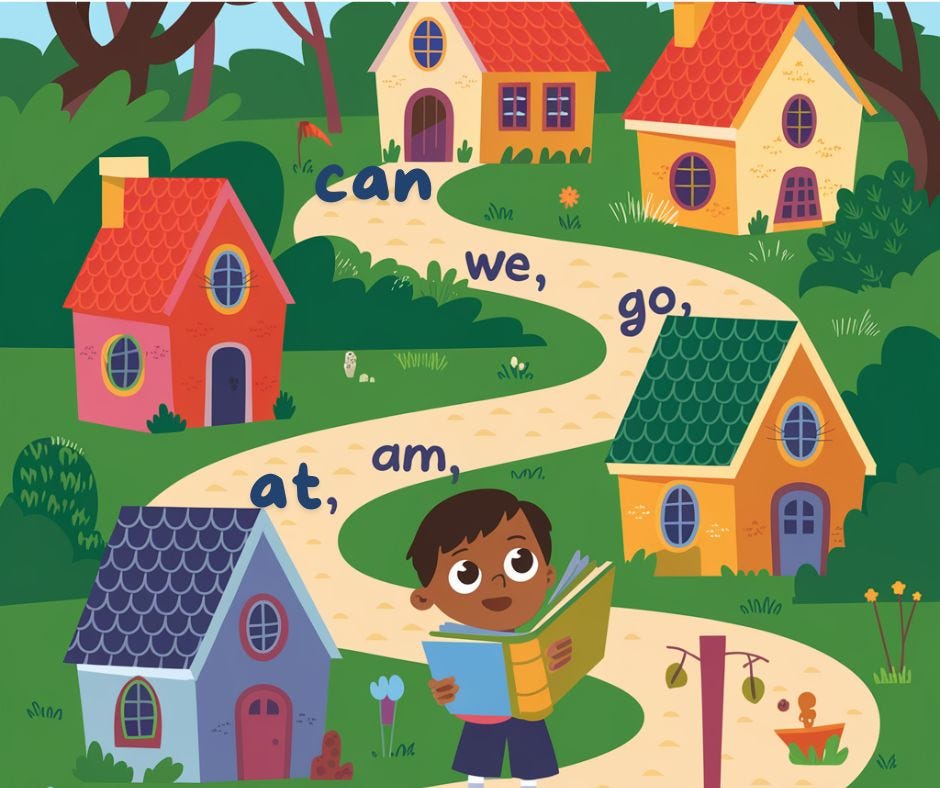
Subject: Sight Words (Set 2: can, we, go, am, at)
Alignment with Standards:
- Common Core State Standards (CCSS):
- CCSS.ELA-LITERACY.RF.1.3.G: Recognize and read grade-appropriate irregularly spelled words (sight words).
- CCSS.ELA-LITERACY.L.1.1.A: Print all upper- and lowercase letters (used in writing activities).
- CCSS.ELA-LITERACY.W.1.5: With guidance and support from adults, focus on a topic, respond to questions and suggestions from peers, and add details to strengthen writing as needed.
Objectives
- Recognize and read the sight words “can,” “we,” “go,” “am,” and “at” quickly and accurately.
- Use these sight words in simple spoken and written sentences.
- Engage in word hunts and story-writing to practice sight word recognition and application.
- Build early reading fluency and writing confidence through creative activities.
Materials
- Sight word flashcards (write “can,” “we,” “go,” “am,” “at” on index cards)
- Picture book with simple text (e.g., We Can! by Child’s Play or Go, Dog. Go! by P.D. Eastman)
- Paper or notebook for writing
- Crayons, markers, or pencils
- Sticky notes or small papers for word hunts
- Optional: Magnetic letters, whiteboard, or a sight word song (e.g., YouTube sight word videos)
Activities
Day 1: Introducing Sight Words (30-45 minutes)
- Warm-Up (5-10 minutes):
- Ask: “What’s a word you see a lot when you read? Today, we’re learning five new ones!”
- Say: “Our words are ‘can,’ ‘we,’ ‘go,’ ‘am,’ ‘at’—they’re super helpers in stories!”
- Direct Instruction (10 minutes):
- Show flashcards one by one: “This is ‘can.’ Say it with me: ‘can.’ What can you do?” (e.g., “I can jump!”)
- Repeat for “we,” “go,” “am,” “at.” Use gestures: Point to self (“am”), wave (“we”), walk fingers (“go”).
- Mix them up, flash quick: “What’s this one?”
- Practice (15-20 minutes):
- Read a book page (e.g., Go, Dog. Go!: “Go, dogs, go!”). Point out “go.”
- Say sentences: “We can go. I am at home.” They repeat.
- Wrap-Up (5 minutes):
- Ask: “Which word was your favorite? Say it in a sentence!”
Day 2: Word Hunts (45 minutes)
- Review (10 minutes):
- Recap: Flash cards—“What’s this? (can) Say it fast!” Mix order.
- Quick game: “If I say ‘we,’ you say ‘we can go!’” Try all five.
- Hands-On Activity: Word Hunt (25 minutes):
- Hide sticky notes with sight words around the room (e.g., “can” on a chair, “at” on a door).
- Hunt: “Find ‘go’! Read it loud!” Collect all five.
- Sort: Lay them out, say each, and make a sentence: “I am at the park.”
- Book hunt: Open a book, spot any of the five words (e.g., “we” in We Can!).
- Wrap-Up (10 minutes):
- Ask: “Which word did you find first? Where was it hiding?”
Day 3: Writing Simple Stories (45 minutes)
- Warm-Up (10 minutes):
- Say: “Let’s use our words to tell stories! What can we write about?”
- Review: Show cards, they read and clap syllables (e.g., “can”—one clap).
- Hands-On Activity: Story Time (25 minutes):
- Model: “We can go. I am at school.” Draw a quick picture (stick figures at school).
- Their turn: Write 2-3 sentences using at least 3 sight words:
- E.g., “I can go. We am at home.” (Guide: “Let’s fix ‘am’—‘We are at home.’”)
- Draw it: “What’s your story show?” (e.g., kids going to a park).
- Read aloud: “Share your story with me!”
- Wrap-Up (10 minutes):
- Celebrate: “You’re a sight word storyteller! Which word helped most?”
Assessment
- Informal Observation: Note their ability to read words during flashcard games and hunts.
- Word Hunt: Check if they recognize and say all 5 words correctly.
- Story: Look for 3+ sight words used in sentences, with a drawing to match.
Extensions
- Word race: Time how fast they read all 5 flashcards—beat it next time!
- Song: Sing “C-A-N, can, can, we can!” to a tune like “Row, Row, Row Your Boat.”
- Add words: Mix in Set 1 (if known) for a bigger story (e.g., “I can go see.”).
Mid Level (Grade 3 to 5)
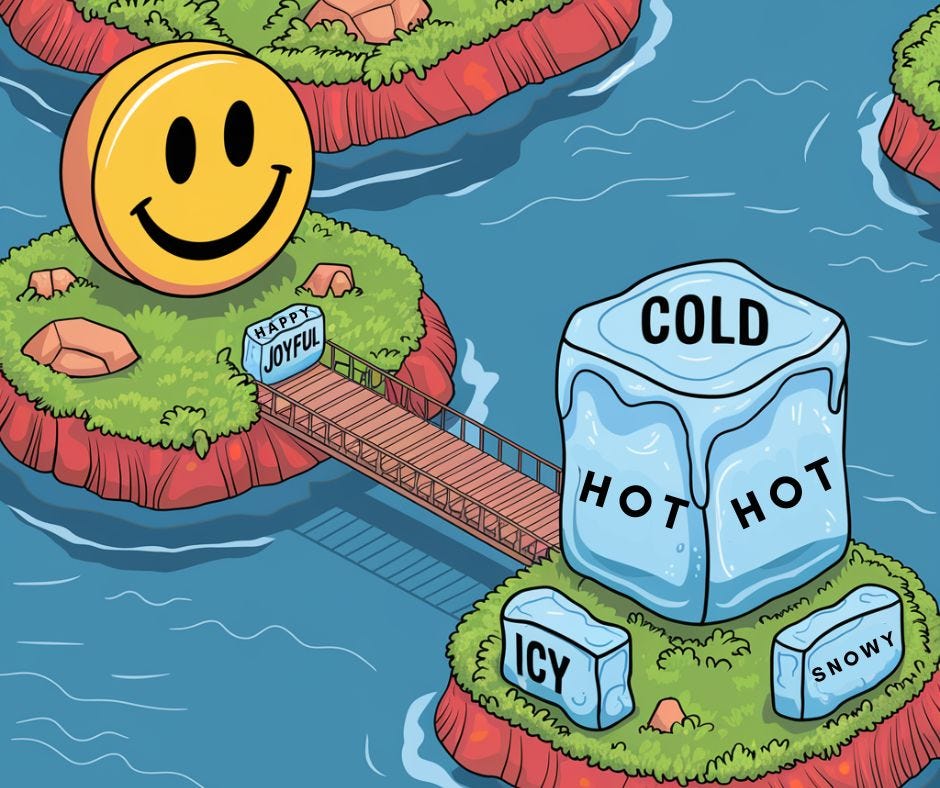
Subject: Synonyms and Antonyms
Alignment with Standards:
- Common Core State Standards (CCSS):
- CCSS.ELA-LITERACY.L.4.5.C: Demonstrate understanding of words by relating them to their opposites (antonyms) and to words with similar but not identical meanings (synonyms).
- CCSS.ELA-LITERACY.L.4.4.A: Use context (e.g., definitions, examples, or restatements in text) as a clue to the meaning of a word or phrase.
- CCSS.ELA-LITERACY.W.4.3.D: Use concrete words and phrases and sensory details to convey experiences and events precisely (enhanced by synonym use).
Objectives
- Understand that synonyms are words with similar meanings and antonyms are words with opposite meanings.
- Expand vocabulary by identifying and using synonyms and antonyms in context.
- Practice word matching and rewrite sentences using synonyms and antonyms to enhance expression.
- Build language fluency and creativity through word exploration.
Materials
- Word cards (e.g., “big,” “large,” “small”; “happy,” “joyful,” “sad”)
- Notebook or paper for writing
- Pencil, pen, or markers
- Thesaurus (kid-friendly, online like Thesaurus.com, or printed)
- Short story or passage (e.g., from a Grade 4 reader or Charlotte’s Web by E.B. White)
- Matching worksheet (sample provided below)
- Optional: Sticky notes, whiteboard, or a word wall
Activities
Day 1: Introduction to Synonyms and Antonyms (45 minutes)
- Warm-Up (10 minutes):
- Ask: “What’s another word for ‘big’? (huge) What’s the opposite? (small)”
- Say: “We’re exploring synonyms—words that mean the same—and antonyms—opposites!”
- Direct Instruction (15 minutes):
- Explain:
- Synonyms: Words that are alike (e.g., “run” and “dash,” “cold” and “chilly”).
- Antonyms: Words that are different (e.g., “hot” and “cold,” “up” and “down”).
- Show pairs: “Happy—joyful (synonym), happy—sad (antonym).”
- Use a sentence: “The dog is big. Synonym: The dog is large. Antonym: The dog is small.”
- Explain:
- Practice (15-20 minutes):
- Read a story page (e.g., Charlotte’s Web: “Wilbur was sad…”).
- Find: “Synonym for ‘sad’? (gloomy) Antonym? (happy)”
- List 3 pairs on the board (e.g., fast/slow, bright/dim).
- Wrap-Up (5 minutes):
- Ask: “Tell me one synonym and one antonym for ‘good’!” (e.g., great/bad)
Day 2: Word Matching (45 minutes)
- Review (10 minutes):
- Recap: “What’s a synonym for ‘jump’? (leap) An antonym? (sit)”
- Quick game: Say a word (e.g., “loud”), they give a synonym or antonym.
- Hands-On Activity: Matching Game (25 minutes):
- Use word cards: “tall,” “high,” “short”; “quick,” “fast,” “slow.”
- Mix them up. Match synonyms (tall/high, quick/fast) and antonyms (tall/short, quick/slow).
- Worksheet sample:
- Match: “big” to “huge” (S), “tiny” (A); “calm” to “peaceful” (S), “wild” (A).
- Discuss: “Why are ‘big’ and ‘huge’ synonyms? How’s ‘tiny’ opposite?”
- Add 2 pairs of their own (e.g., “run/race,” “run/stop”).
- Wrap-Up (10 minutes):
- Ask: “Which match was trickiest? What’s a new word you learned?”
Day 3: Sentence Rewriting (45 minutes)
- Warm-Up (10 minutes):
- Say: “The cat is fast. Make it a synonym sentence! (The cat is quick.) Now an antonym! (The cat is slow.)”
- Hands-On Activity: Rewriting (25 minutes):
- Give sentences:
- “The day was hot.” (Synonym: “The day was warm.” Antonym: “The day was cold.”)
- “She felt happy.” (Synonym: “She felt joyful.” Antonym: “She felt sad.”)
- Use a thesaurus: Rewrite 3 more:
- “The hill is steep.” (Synonym: “The hill is sharp.” Antonym: “The hill is flat.”)
- Write and draw: Pick one rewritten pair, sketch it (e.g., hot sun vs. cold snow).
- Give sentences:
- Wrap-Up (10 minutes):
- Share: “Read me your best synonym sentence! How does it change the feel?”
Assessment
- Informal Observation: Note their ability to identify synonyms/antonyms during games.
- Matching: Check if they correctly pair most words (e.g., 80% right).
- Rewriting: Look for 3 sentences with accurate synonym/antonym swaps.
Extensions
- Word hunt: Find synonyms/antonyms in a favorite book.
- Synonym chain: Start with “big,” next person says “large,” then “huge,” etc.
- Story upgrade: Rewrite a paragraph from a story with richer synonyms.
High Level (Grade 6 to 8)
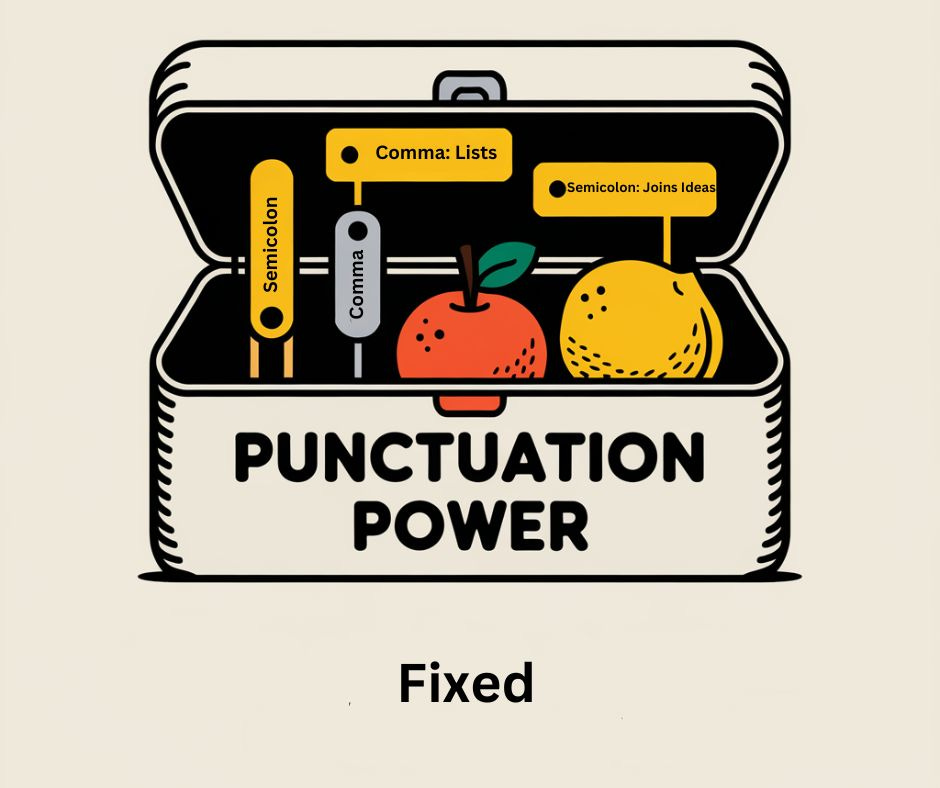
Subject: Punctuation and Sentence Fluency
Alignment with Standards:
- Common Core State Standards (CCSS):
- CCSS.ELA-LITERACY.L.7.2.A: Use a comma to separate coordinate adjectives (e.g., “It was a long, tiring day”).
- CCSS.ELA-LITERACY.L.7.2.B: Use punctuation (comma, ellipsis, dash) to indicate a pause or break (extends to semicolons and colons).
- CCSS.ELA-LITERACY.W.7.5: With some guidance and support from peers and adults, develop and strengthen writing as needed by planning, revising, editing, rewriting, or trying a new approach, focusing on how well purpose and audience have been addressed.
Objectives
- Understand the rules for using commas, semicolons, and colons to improve sentence structure and clarity.
- Apply these punctuation marks correctly to enhance sentence fluency and meaning.
- Edit sentences and passages to practice proper punctuation usage.
- Develop writing precision and revision skills through targeted exercises.
Materials
- Notebook or paper for writing
- Pencil, pen, or markers (red for editing)
- Printed or handwritten sentences/passages for editing (samples below)
- Reference sheet: Comma, semicolon, colon rules (handout or digital)
- Short story or article (e.g., from a Grade 7 reader or online source like CommonLit)
- Optional: Whiteboard, highlighter, or punctuation flashcards
Activities
Day 1: Introduction to Commas, Semicolons, and Colons (45 minutes)
- Warm-Up (10 minutes):
- Ask: “What’s a comma do in a sentence? Ever seen a semicolon? Today, we’re mastering these punctuation pros!”
- Write: “I like pizza cake and cookies.” Discuss: “Where do commas go?” (I like pizza, cake, and cookies.)
- Direct Instruction (15 minutes):
- Explain rules:
- Comma (,): Lists (apples, oranges, bananas), after intros (After school, I play), between adjectives (tall, green tree).
- Semicolon (;): Joins related independent clauses (I wanted to go; it was raining).
- Colon (:): Introduces lists or explanations (I need three things: pen, paper, book).
- Examples:
- “She ran, jumped, and laughed.”
- “He studied hard; he passed the test.”
- “Here’s my plan: finish homework first.”
- Explain rules:
- Practice (15-20 minutes):
- Quick edit: “I packed apples oranges pears.” (Add commas: apples, oranges, pears.)
- “She was tired she kept working.” (Semicolon: tired; she kept…)
- “I love these sports soccer basketball.” (Colon: sports: soccer, basketball.)
- Wrap-Up (5 minutes):
- Ask: “Which mark was new to you? Try one in a sentence!”
Day 2: Editing Exercises—Focus on Rules (45 minutes)
- Review (10 minutes):
- Recap: “What’s a colon for? When do we use a semicolon instead of a comma?”
- Quick quiz: Add punctuation to “We need snacks juice candy.” (snacks: juice, candy)
- Hands-On Activity: Sentence Editing (25 minutes):
- Edit these:
- “The dog barked ran and chased the cat.” (barked, ran, and chased)
- “I wanted to swim the pool was closed.” (swim; the pool was closed)
- “My bag has pencils erasers notebooks.” (has: pencils, erasers, notebooks)
- Mix it up: “After lunch we played soccer it was fun.” (After lunch, we played soccer; it was fun.)
- Write 2 originals: One with a comma list, one with a semicolon.
- Edit these:
- Wrap-Up (10 minutes):
- Discuss: “How did punctuation change the sentences? Which rule was easiest?”
Day 3: Passage Editing and Fluency (45 minutes)
- Warm-Up (10 minutes):
- Say: “The forest was quiet dark and spooky.” Fix it: (quiet, dark, and spooky)
- Hands-On Activity: Passage Work (25 minutes):
- Use a short passage:
- “Sam wanted to camp he forgot his tent. He packed food water blankets. In the woods it was cold windy rainy.”
- Edit:
- “Sam wanted to camp; he forgot his tent. He packed: food, water, blankets. In the woods, it was cold, windy, rainy.”
- Rewrite one sentence with flair: “In the woods, it was a cold, windy, rainy night; Sam shivered all night.”
- Check: Read aloud—does it flow better?
- Use a short passage:
- Wrap-Up (10 minutes):
- Share: “Read me your best sentence! How does punctuation help us read?”
Assessment
- Informal Observation: Note their grasp of rules during discussions and edits.
- Sentence Edits: Check for correct use of commas (lists), semicolons (clauses), colons (lists/explanations).
- Passage: Ensure at least 3 accurate punctuation fixes with improved fluency.
Extensions
- Punctuation hunt: Find commas, semicolons, colons in a book page.
- Write a story: Use all 3 marks in 5 sentences.
- Debate: “Which punctuation is most useful?” Defend with examples.

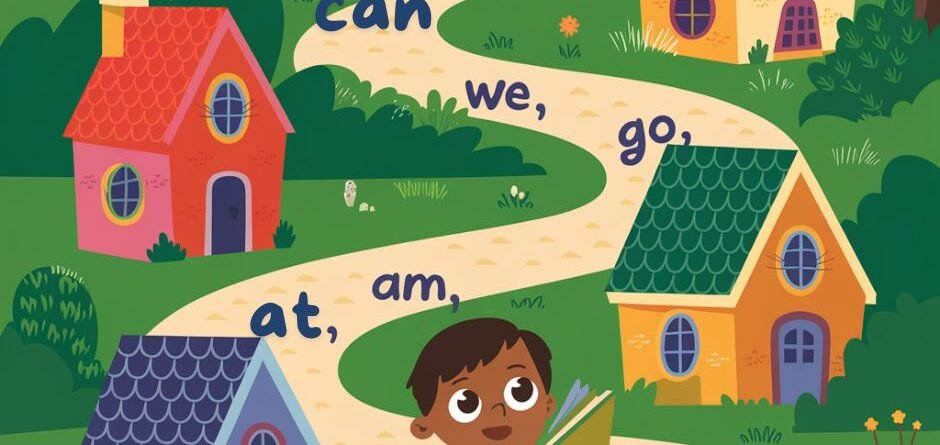



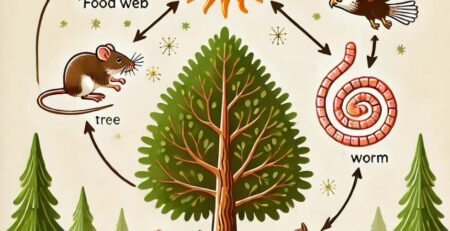

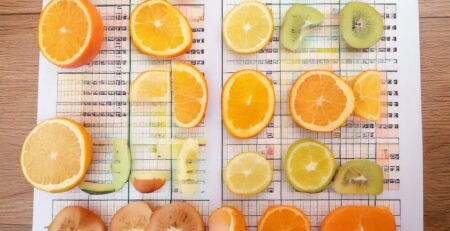




LEAVE A COMMENT